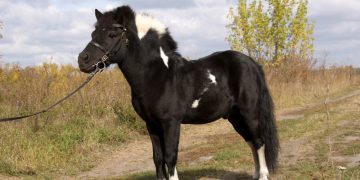Introduction
Just like humans, cats go through a teething process as they grow. Understanding when kittens get their adult teeth, how to care for them during teething, and what to do if you notice unusual dental changes (like a double fangs kitten) is essential for pet owners.
This guide will cover the full timeline of feline teething, how to support your kitten through the process, and what to watch for in adult cats.
The Stages of Kitten Teething
Kittens are born toothless, but their baby teeth—also called deciduous teeth—start emerging within the first few weeks of life. Below is a detailed breakdown of the feline teething timeline.
1. Baby Teeth Eruption (2-6 Weeks Old)
At around 2 to 3 weeks old, kittens start getting their milk teeth (baby teeth). By 6 weeks, they should have all 26 baby teeth. These tiny teeth help them transition from nursing to solid food.
2. Kitten Teething (3-6 Months Old) – Losing Baby Teeth
Between 3 to 4 months old, kittens start losing their baby teeth as their adult teeth push through. This teething stage can last until 6 months old.
- Kittens may have sore gums, increased chewing, and even mild bleeding as teeth fall out.
- You might find tiny baby teeth around your home, but many kittens swallow them while eating.
- Some kittens experience “double fangs” when adult canine teeth grow in before the baby teeth fall out.
3. When Do Kittens Stop Teething? (6-7 Months Old)
By 6-7 months old, kittens should have lost all their baby teeth and replaced them with 30 adult teeth. If a kitten still has baby teeth by this time, they may need a vet visit to prevent dental problems.
4. Do Cats Teeth at 1 Year Old?
By the time a cat reaches 1 year old, their full set of adult teeth should be in place. However, some cats may still experience mild chewing behaviors due to lingering habits from teething. If a cat is still losing teeth or experiencing dental issues at 1 year old, a vet should check for problems like retained baby teeth or gum disease.
Do Kittens’ Teeth Grow Back?
No, kittens’ baby teeth do not grow back once they fall out. They are replaced with permanent adult teeth, which need proper care to last a lifetime.
How to Help a Kitten During Teething
Kitten teething can cause discomfort, leading to excessive chewing or irritability. Here are ways to help your kitten through this stage:
-
Provide Safe Chew Toys
- Soft rubber or silicone kitten teething toys can soothe sore gums.
- Avoid hard objects that could damage emerging teeth.
-
Give Cold Treats
- Chilled wet food or frozen broth cubes can help numb their gums.
-
Use a Gentle Gum Massage
- Lightly rubbing their gums with a clean finger can provide relief.
-
Ensure Proper Nutrition
- High-quality kitten food supports strong teeth and gum health.
-
Monitor for Dental Issues
- Watch for double fangs, excessive drooling, or refusal to eat.
- If baby teeth don’t fall out, a vet may need to remove them.
Double Fangs in Kittens – Is It Normal?
Sometimes, kittens will temporarily have two sets of fangs—one baby and one adult—at the same time. This happens when the baby canine teeth don’t fall out before the permanent ones grow in.
While this usually resolves on its own, if double fangs persist past 6-7 months, a vet may need to extract the baby teeth to prevent misalignment or infections.
Caring for Your Cat’s Adult Teeth
Once a kitten has their full adult set of teeth, maintaining their dental health is crucial. Follow these tips:
- Brush their teeth regularly using cat-friendly toothpaste.
- Provide dental chews to help reduce plaque buildup.
- Schedule annual vet checkups to monitor oral health.
- Watch for dental issues like bad breath, excessive drooling, or difficulty eating.
Conclusion
By the time a cat reaches 6-7 months old, they should have all their adult teeth in place. If a kitten still has baby teeth beyond this age or shows signs of double fangs, it’s best to consult a vet.
Providing proper care during teething and maintaining good dental hygiene ensures your cat’s teeth remain strong and healthy throughout their life.

























